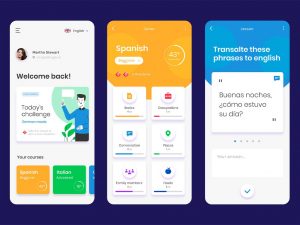While a picture may be worth a thousand words, graphic design can be worth thousands of dollars in any business.
Graphic design is more than just aesthetics; graphic design is a form of communication between your business and your audience. Businesses use graphics in every stage of the marketing funnel to inform, delight, and eventually persuade to purchase (or take the desired action).
You may craft a flyer design to inform your audience about an upcoming workshop, design an email series to upsell a service to current customers, or create a sales page for a new product release.
If you’re in a business, you’re in the business of graphic design.
Anonymous
Let’s look at five reasons why graphic design is important for any business (including yours) to expand brand reach and turn more profit.
1. First impressions matter.
Graphic design is important for any business wanting to make a positive, lasting impression. The first time a visitor interacts with your brand in any capacity will set the tone for the rest of your business relationship.
The first business graphic a prospect encounters may be a business card, a sales page on your website, an online ad, a flyer, your latest social media post, or even your product packaging.
Capitalize on the first step of the buyer’s journey by implementing relevant, updated graphics that tell the story of your brand (hint: you may need to give your Facebook a facelift).
When a customer hears about your brand for the first time, they are most likely going to do some preliminary research on your website before making a purchase. What does your website homepage say about your brand? Are there bright, cheery colors with whimsical fonts? Or did you use sleek, professional design elements with gray and silver hues?

Take a ‘tour’ of your business website and social media pages, updating any graphics that no longer accurately represent your brand or brand message.
2. Consistency is credibility.
Graphic design is important for any business wanting to create credibility in their industry or field. The more content you provide that helps solve a problem or relieve a pain point, the more the audience will trust your advice and start to regard you as an expert in your field.
To demonstrate this point, let’s say you’re walking in the park and see a basketball player sink a 3-point shot. It was a great shot, but would you assume he’s a great basketball player because he made one basket? Probably not; it could’ve been a lucky shot. If you had seen the same player sink 30 shots in a row, though, you might start to believe he’s actually a professional basketball player. Consistency creates credibility.
The same principle applies to marketing and branding; if you create a piece of content that helps someone solve a problem or relieve a pain point in their own life, they will most likely turn to you for advice again when facing a similar situation in the future.
Consistent content creation is the key to building a dedicated following of people who trust your brand and believe in your message.
3. Efficiency in summary.
Graphic design is important for any business looking to share information with ease. HubSpot reports that infographics are actually liked and shared on social media 3x more than any other type of content.
Infographics are a great way to summarize information that your audience would otherwise skim over (or skip reading completely). Humans are heavily influenced by visuals; adding relevant graphics to text can deepen our understanding and recollection of information.
If you’ve ever learned another language with Rosetta Stone, you’ve experienced the phenomenon of using visuals to deepen understanding and recollection. This language-learning software never offers explicit definitions to foreign words, but instead forces the student to infer the answer using visual context clues. The secret to success, according to the Rosetta Stone website, is discovering patterns instead of memorizing rules: “Rather than allowing you to rely on repetition and parroting, our sequence leads you to arrive at the right answers intuitively.
Learning actively helps you retain your new language skills. And before you know it, you’ll be thinking in your new language-instead of just speaking it” (source: Rosetta Stone).
Try incorporating infographics anywhere you currently use large blocks of text to explain information. Have a “how-to” page? Turn it into an easy-to-follow infographic. Posting an article about social media statistics on your blog? Add an infographic summarizing the important stats.
4. Creativity kills competition.
Graphic design is important for any business looking to slay competition in the marketplace.
With all of the free online design tools available today, it has never been easier to create quality content. This low barrier to entry in the content creation world is a good thing for those looking to build a brand; it does, however, come with the lofty price of new competition.
To stay ahead of competitors in the marketplace, you’ve got to get creative.
Create content that approaches an idea, solves a problem, or relieves a paint point in an innovative way. Graphic design can be used to empathize with the audience by literally showing the audience what life would look and feel like with pain point x solved by your product, service, or advice.
If you’re looking for creative ideas to use in your next graphic design project, peruse through our Digital Design Library. The Digital Design Library is a collection of over 200 graphic design requests created for actual Design Pickle clients (and it’s totally free to download!).
5. Your message matters.
Above all, graphic design is important for any business to tell its story. Whether you’re a solopreneur selling homemade jewelry on Etsy or part of a multimillion-dollar e-commerce operation, your business has a story to tell.
Graphic design communicates more than just words to your audience. Even simple design elements like font choice and color scheme can help to portray an emotion or feeling that supports your message.
While the message of all the graphics in your business will differ slightly, they should all tell the same story about your brand. Having a branding guide in place will help you and your team choose design elements that tell the same story and keep the look of your brand consistent.












